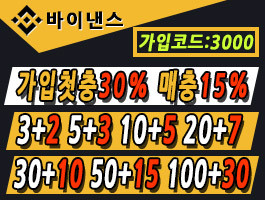Guide To Bunk Bed In Middle Of Room: The Intermediate Guide To Bunk Bed In Middle Of Room
작성자 정보
-
 Mauricio Waldro… 작성
Mauricio Waldro… 작성
- 작성일
본문
Bunk Bed in Middle of Room
For kids who share a room bunk cabin beds mid sleeper are an excellent addition to the space. They add fun and create an exciting focal point for the bedroom.
Bunk beds are ideal for rooms with architectural flaws like steep ceilings or large bedrooms with enough space to accommodate the stacked configuration. To ensure a good placement of bunk beds, it is important to follow a few basic design guidelines.
Storage
There are many clever ways to store things in bunk beds. This will keep them off the floor and away from view. The addition of shelving units is an easy and inexpensive option for storing books, decorative items, or things that are normally placed on nightstands or dressers. Built-in closet systems can be a great way to expand the storage space in your bunk bed. These closets can be designed to fit with your bedroom decor and provide the ideal space to hang clothes or put away linens and toys.
If you want a more elegant solution, try incorporating shelves into the sides of your bunk beds. These shelves can be used to store your bedside lights, alarm clocks, and other daily necessities that might otherwise clutter the dresser or floor. They can also be used to display photos that have been framed or other knick-knacks. Also, you can consider incorporating storage drawers in the stairs of your bunk bed. They are a great option for shared bedrooms, as they allow each shorty mid sleeper cabin bed to store their own personal belongings in a convenient location without compromising safety or the quality of the staircase.
If you don't want undertake a DIY project, you can purchase already-made storage drawers compatible with all types of bunk beds. They are a great method of making the most of the space under your bed and can be found in home improvement stores or online retailers.
You can also incorporate storage into your bunk bed by building in cubbies to form one wall, as in this charming shared bedroom. These are a great way to store shoes, backpacks or blankets so they don't occupy other rooms. You can also hang coats, hats and other items on hooks that are positioned on the wall.
Flow
This bunk bed design allows you to keep the layout of your child's space open. You can also use the space underneath as storage space for your bedroom, with clever shelves and drawers. This is a great idea for small spaces as it frees up floor space that can be used to store other bedroom furniture or to create an exciting playroom design.
If you are putting a bunk bed in the middle of your space, it is important to think about how traffic will flow throughout the room. Be sure to leave plenty of space between the bunk bed and the door or closet. You may also think about adding an area rug as a focal point to anchor the room.
If you are concerned about safety, take into consideration the position of the bunk beds with respect to the furniture around them and the ceiling. It is important to be sure that the distance from the top bunk bed to the ceiling is not greater than 24 inches and the distance between the lower bunk bed and the ceiling, is not more than 16 inches.
The frame of the bunk bed as well as the way it's attached to the wall are the most important factors that determine if they'll sway. Our bunk beds are tested and inspected for safety and stability using ASTM standards and quality controls. A slight jiggle is normal and won't impact stability.
If you're concerned about your children sleeping close to each one another, you should think about purchasing a bunk bed that has an individual ladder that gives each child their own area to sleep. This will also prevent arguments or squabbles about who gets to sleep in the top bunk. You can also provide your children with comfortable ladders or steps for climbing up to the bunk. A night light should be placed close to them to make them more visible.
Design
If you have kids sharing rooms bunk beds can be a fun way to maximize space. These beds are available in a variety of sizes and configurations, including twin over full and queen over twin and even king over queen, making them a versatile choice for any shared bedroom.
If placed in the middle of the room, a bunk bed creates an exciting focal point for the space. A bunk bed placed in the middle of a room can also help delineate an area to accommodate furniture, such as workstations study tables and seating areas. When paired with a bold accent wall or window seat, the arrangement can create an inviting space for children to hang out and socialize.
Whether dressed in playful bedding or sporting memorabilia bunks can be styled to reflect the character of the children who sleep within them. In this bunk room a mix of metal and wood bunks with sleek lines complements a modern interior palette. The patterned throws and bright pillows create an eclectic feel The bunks' sleek lines and practical storage create a cohesive look.
This lakefront bungalow has a set of twin over full bunk beds that create an easy and functional place for children to sleep and play. The beds are constructed of a mix of wood and shiplap. The linens are blue to fit the decor of the room. Built-in niches in the bunks make a great place to store alarm clocks, books, and even computers. A bold blue trunk is a fun pop of color in the corner.
If you have enough floor space A bunk bed in the middle of the room can be utilized to create a cozy reading area for two kids. This set-up has two twins that are identical and an incorporated staircase that leads to the higher mid sleeper cabin bed with stairs. The upper bunk is furnished with a comfy covered headboard and privacy curtains to make sleeping on top feel like a swanky place to relax.
If you're not sure whether to put a bunk bed in the middle of your living space, consider using room dividers and other decorative elements to create a spacious space that is purposeful and intentional. A large area rug, for instance is a great option for a half-wall to separate the bunk beds from an activity area or sitting space.
Safety
Bunk beds placed in the middle of a room can be a great design feature, however there are some security risks. Children must be taught to use bunk beds in a safe manner, and parents should be on guard at all times during sleep particularly on the top bunk. The majority of bunk bed injuries result from improper use, not due to the bunk bed's design or structure. Bunk bed injuries can be avoided through regular maintenance and supervision.
The guardrails on a bunk bed must be sufficient to stop your child from falling off the bed. The top bunk's height should be at least 30 inches from the floor and the top bunk should have a clearance of at 5 inches between the mattress and the guardrail.
Make use of the tools provided by the manufacturer to achieve the best results. Don't attempt to modify or use substitute parts since this could affect the structural integrity. After the bed is assembled, gently shake it to test its stability. Any movement that is unstable could mean that connections need to be strengthened or tightened. The mattress platform must be snugly fitted. It shouldn't be sagging in order to compromise the strength or the ladder.
It is also essential to teach your children to use the ladder properly. They are intended to be used to climb up and down beds. They should not be used for roughhousing, or for playing. This increases the chance of injuries. It's also an excellent idea to put up an evening light near the ladder so that your children can see whether they're climbing up or down at the night.
It is also essential to keep the area around the bunk bed clear of objects that could cause harm, like ropes, scarves, and belts. These can strangle a child or create other unsafe situations. Bunk beds should also not be positioned in a manner that blocks windows or doors designated for escape during a fire. They can also increase the severity of injuries sustained from falling through a window, or being trapped in a closed space.
For kids who share a room bunk cabin beds mid sleeper are an excellent addition to the space. They add fun and create an exciting focal point for the bedroom.
Bunk beds are ideal for rooms with architectural flaws like steep ceilings or large bedrooms with enough space to accommodate the stacked configuration. To ensure a good placement of bunk beds, it is important to follow a few basic design guidelines.
Storage
There are many clever ways to store things in bunk beds. This will keep them off the floor and away from view. The addition of shelving units is an easy and inexpensive option for storing books, decorative items, or things that are normally placed on nightstands or dressers. Built-in closet systems can be a great way to expand the storage space in your bunk bed. These closets can be designed to fit with your bedroom decor and provide the ideal space to hang clothes or put away linens and toys.
If you want a more elegant solution, try incorporating shelves into the sides of your bunk beds. These shelves can be used to store your bedside lights, alarm clocks, and other daily necessities that might otherwise clutter the dresser or floor. They can also be used to display photos that have been framed or other knick-knacks. Also, you can consider incorporating storage drawers in the stairs of your bunk bed. They are a great option for shared bedrooms, as they allow each shorty mid sleeper cabin bed to store their own personal belongings in a convenient location without compromising safety or the quality of the staircase.
If you don't want undertake a DIY project, you can purchase already-made storage drawers compatible with all types of bunk beds. They are a great method of making the most of the space under your bed and can be found in home improvement stores or online retailers.
You can also incorporate storage into your bunk bed by building in cubbies to form one wall, as in this charming shared bedroom. These are a great way to store shoes, backpacks or blankets so they don't occupy other rooms. You can also hang coats, hats and other items on hooks that are positioned on the wall.
Flow
This bunk bed design allows you to keep the layout of your child's space open. You can also use the space underneath as storage space for your bedroom, with clever shelves and drawers. This is a great idea for small spaces as it frees up floor space that can be used to store other bedroom furniture or to create an exciting playroom design.
If you are putting a bunk bed in the middle of your space, it is important to think about how traffic will flow throughout the room. Be sure to leave plenty of space between the bunk bed and the door or closet. You may also think about adding an area rug as a focal point to anchor the room.
If you are concerned about safety, take into consideration the position of the bunk beds with respect to the furniture around them and the ceiling. It is important to be sure that the distance from the top bunk bed to the ceiling is not greater than 24 inches and the distance between the lower bunk bed and the ceiling, is not more than 16 inches.
The frame of the bunk bed as well as the way it's attached to the wall are the most important factors that determine if they'll sway. Our bunk beds are tested and inspected for safety and stability using ASTM standards and quality controls. A slight jiggle is normal and won't impact stability.
If you're concerned about your children sleeping close to each one another, you should think about purchasing a bunk bed that has an individual ladder that gives each child their own area to sleep. This will also prevent arguments or squabbles about who gets to sleep in the top bunk. You can also provide your children with comfortable ladders or steps for climbing up to the bunk. A night light should be placed close to them to make them more visible.
Design
If you have kids sharing rooms bunk beds can be a fun way to maximize space. These beds are available in a variety of sizes and configurations, including twin over full and queen over twin and even king over queen, making them a versatile choice for any shared bedroom.
If placed in the middle of the room, a bunk bed creates an exciting focal point for the space. A bunk bed placed in the middle of a room can also help delineate an area to accommodate furniture, such as workstations study tables and seating areas. When paired with a bold accent wall or window seat, the arrangement can create an inviting space for children to hang out and socialize.
Whether dressed in playful bedding or sporting memorabilia bunks can be styled to reflect the character of the children who sleep within them. In this bunk room a mix of metal and wood bunks with sleek lines complements a modern interior palette. The patterned throws and bright pillows create an eclectic feel The bunks' sleek lines and practical storage create a cohesive look.
This lakefront bungalow has a set of twin over full bunk beds that create an easy and functional place for children to sleep and play. The beds are constructed of a mix of wood and shiplap. The linens are blue to fit the decor of the room. Built-in niches in the bunks make a great place to store alarm clocks, books, and even computers. A bold blue trunk is a fun pop of color in the corner.
If you have enough floor space A bunk bed in the middle of the room can be utilized to create a cozy reading area for two kids. This set-up has two twins that are identical and an incorporated staircase that leads to the higher mid sleeper cabin bed with stairs. The upper bunk is furnished with a comfy covered headboard and privacy curtains to make sleeping on top feel like a swanky place to relax.
If you're not sure whether to put a bunk bed in the middle of your living space, consider using room dividers and other decorative elements to create a spacious space that is purposeful and intentional. A large area rug, for instance is a great option for a half-wall to separate the bunk beds from an activity area or sitting space.
Safety
Bunk beds placed in the middle of a room can be a great design feature, however there are some security risks. Children must be taught to use bunk beds in a safe manner, and parents should be on guard at all times during sleep particularly on the top bunk. The majority of bunk bed injuries result from improper use, not due to the bunk bed's design or structure. Bunk bed injuries can be avoided through regular maintenance and supervision.
The guardrails on a bunk bed must be sufficient to stop your child from falling off the bed. The top bunk's height should be at least 30 inches from the floor and the top bunk should have a clearance of at 5 inches between the mattress and the guardrail.
Make use of the tools provided by the manufacturer to achieve the best results. Don't attempt to modify or use substitute parts since this could affect the structural integrity. After the bed is assembled, gently shake it to test its stability. Any movement that is unstable could mean that connections need to be strengthened or tightened. The mattress platform must be snugly fitted. It shouldn't be sagging in order to compromise the strength or the ladder.
It is also essential to teach your children to use the ladder properly. They are intended to be used to climb up and down beds. They should not be used for roughhousing, or for playing. This increases the chance of injuries. It's also an excellent idea to put up an evening light near the ladder so that your children can see whether they're climbing up or down at the night.
It is also essential to keep the area around the bunk bed clear of objects that could cause harm, like ropes, scarves, and belts. These can strangle a child or create other unsafe situations. Bunk beds should also not be positioned in a manner that blocks windows or doors designated for escape during a fire. They can also increase the severity of injuries sustained from falling through a window, or being trapped in a closed space.
관련자료
-
이전
-
다음
댓글 0
등록된 댓글이 없습니다.




